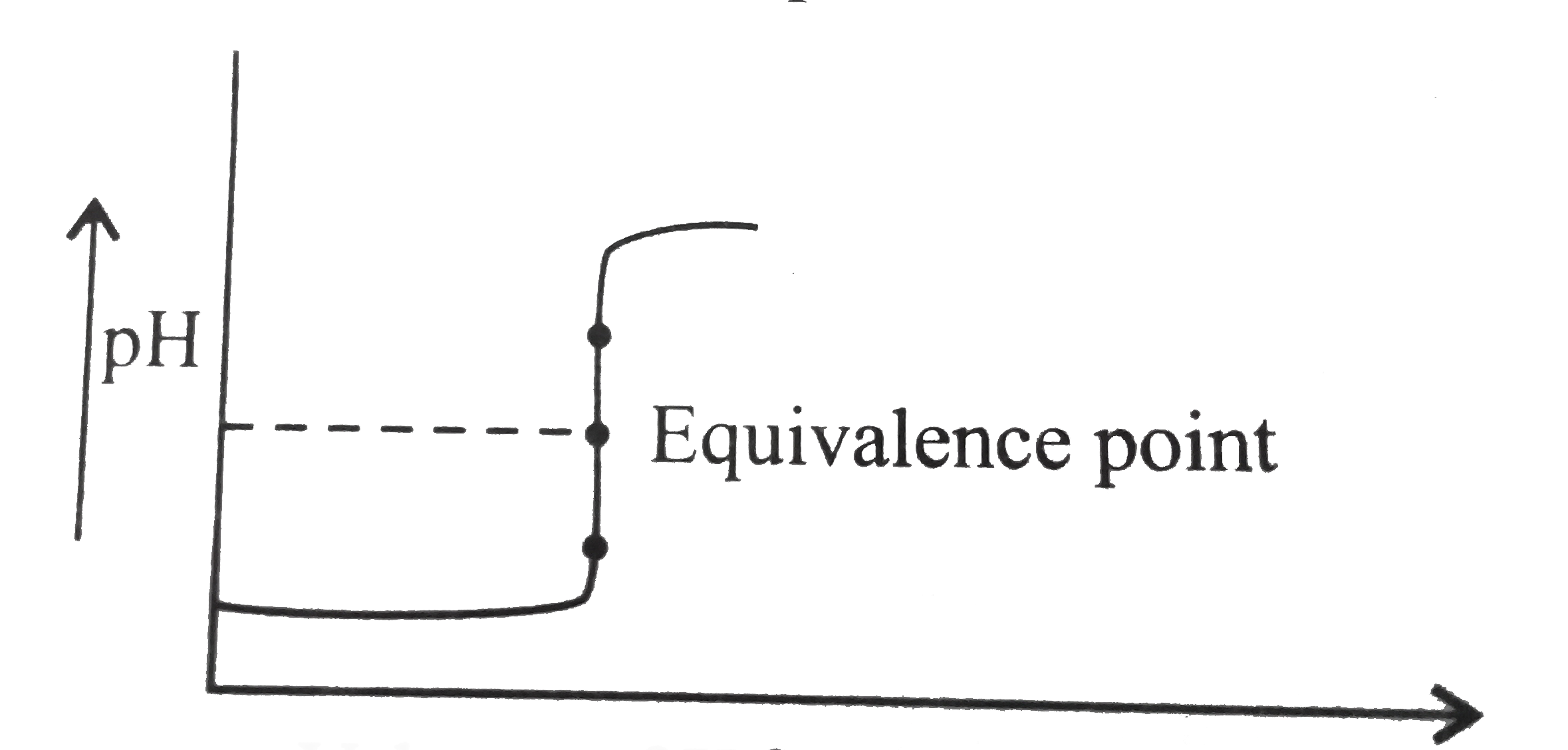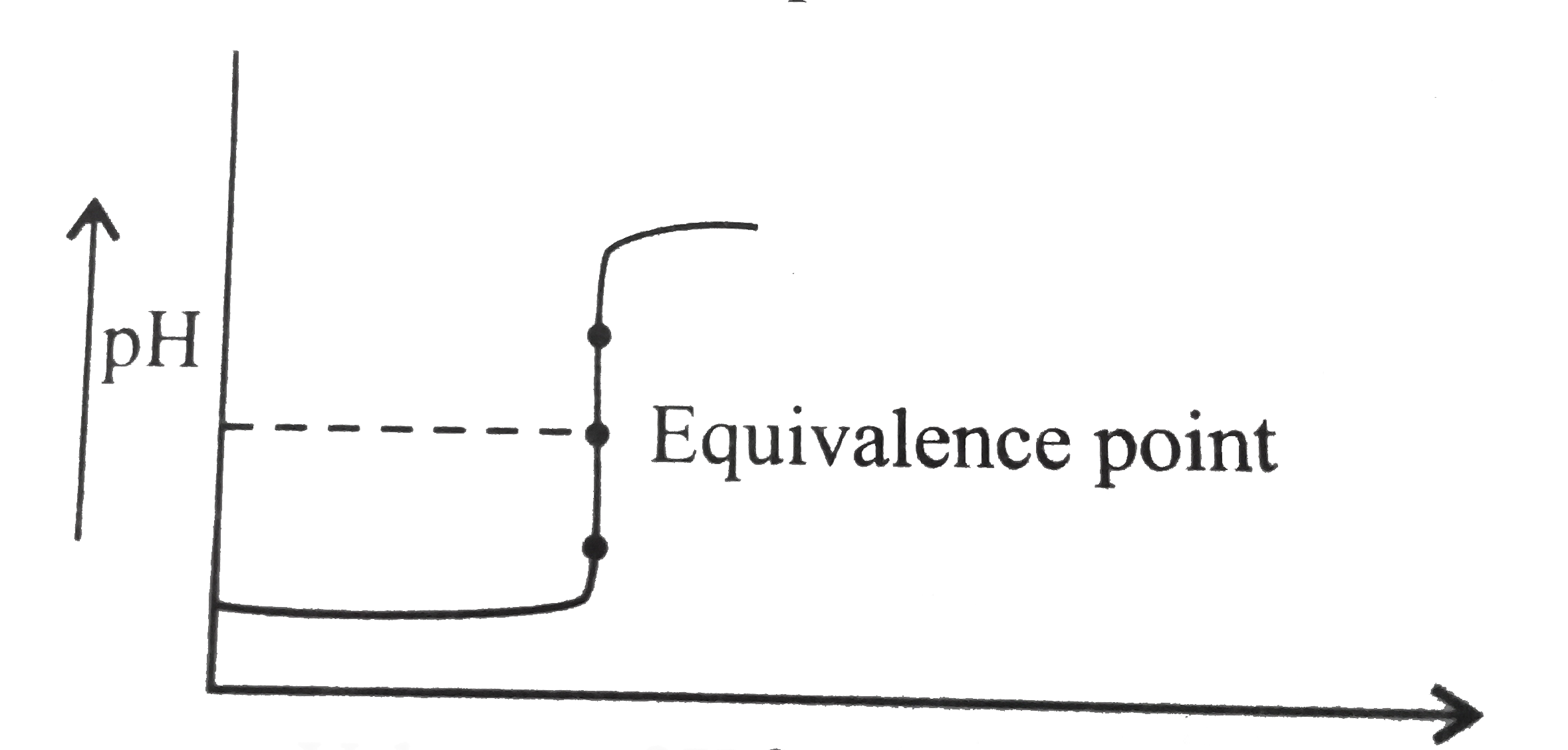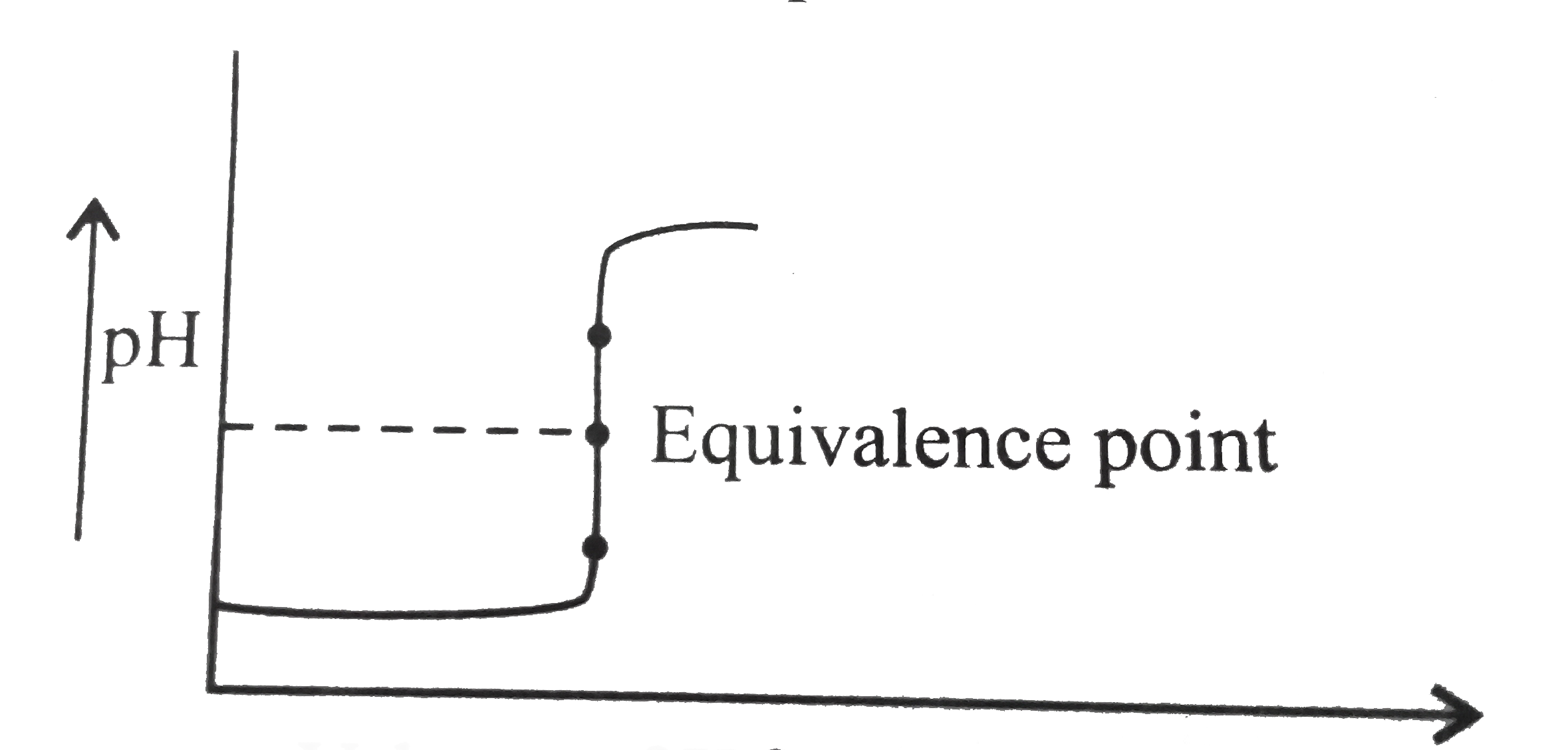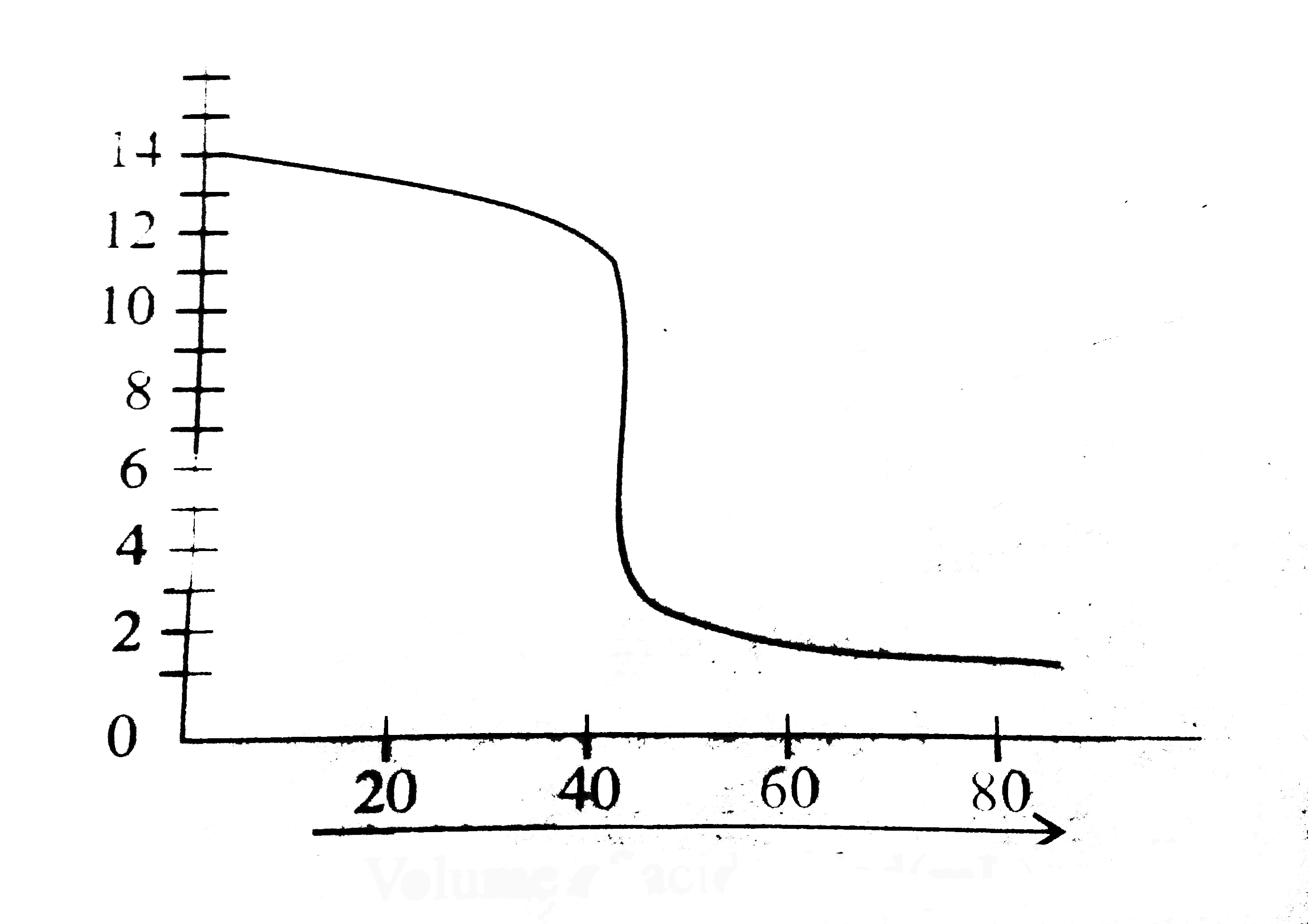Determine the probable formula of an acid salt which is an oxidising agent from the following data.Its equivalent weight as an acid is 390 and as an oxidising agent is 32.5. It contains 10% of potassium and 65% of iodine.
To determine the probable formula of an acid salt that acts as an oxidizing agent, we will follow these steps based on the provided data:
Step 1: Analyze the given data
We have the following information:
- Equivalent weight as an acid = 390 g/equiv
- Equivalent weight as an oxidizing agent = 32.5 g/equiv
- Composition: 10% potassium (K) and 65% iodine (I)
Step 2: Calculate the mass of potassium and iodine in 390 g of the compound
- Potassium: 10% of 390 g = 10100×390=39g
- Iodine: 65% of 390 g = 65100×390=253.5g
Step 3: Determine the number of moles of potassium and iodine
- Moles of Potassium (K):
- Atomic weight of K = 39 g/mol
- Moles of K = 39g39g/mol=1mol
- Moles of Iodine (I):
- Atomic weight of I = 127 g/mol
- Moles of I = 253.5g127g/mol≈1.996mol
Step 4: Determine the simplest formula
From the moles calculated:
- Moles of K = 1
- Moles of I ≈ 2
This suggests a formula of KHI2.
Step 5: Calculate the equivalent weight as an oxidizing agent
Given that the equivalent weight as an oxidizing agent is 32.5 g/equiv, we can find the number of equivalents:
- Total equivalents = 390g32.5g/equiv≈12equiv
Step 6: Write the half-reaction for the oxidizing agent
The half-reaction for iodine can be represented as:
IO−3+6H++6e−→I−+3H2O
From this, we see that 1 mole of IO−3 produces 6 equivalents.
Step 7: Determine the probable formula
Since we have established that KHI2 is the base structure, we can extend this to include oxygen. The probable formula considering the oxidation state and equivalents is:
KHI3O6
Step 8: Finalize the formula
The final probable formula of the acid salt that acts as an oxidizing agent is:
KHI3O6
We have the following information:
- Equivalent weight as an acid = 390 g/equiv
- Equivalent weight as an oxidizing agent = 32.5 g/equiv
- Composition: 10% potassium (K) and 65% iodine (I)
- Potassium: 10% of 390 g = 10100×390=39g
- Iodine: 65% of 390 g = 65100×390=253.5g
- Moles of Potassium (K):
- Atomic weight of K = 39 g/mol
- Moles of K = 39g39g/mol=1mol
- Atomic weight of I = 127 g/mol
- Moles of I = 253.5g127g/mol≈1.996mol
From the moles calculated:
- Moles of K = 1
- Moles of I ≈ 2
Given that the equivalent weight as an oxidizing agent is 32.5 g/equiv, we can find the number of equivalents:
- Total equivalents = 390g32.5g/equiv≈12equiv
The half-reaction for iodine can be represented as:
IO−3+6H++6e−→I−+3H2O
Since we have established that KHI2 is the base structure, we can extend this to include oxygen. The probable formula considering the oxidation state and equivalents is:
KHI3O6
The final probable formula of the acid salt that acts as an oxidizing agent is:
KHI3O6
Topper's Solved these Questions
- STOICHIOMETRYBOOK - CENGAGE CHEMISTRY ENGLISHCHAPTER - STOICHIOMETRYEXERCISE - Ex 3.5
6 Videos
- STOICHIOMETRYBOOK - CENGAGE CHEMISTRY ENGLISHCHAPTER - STOICHIOMETRYEXERCISE - Ex 3.6
10 Videos
- STOICHIOMETRYBOOK - CENGAGE CHEMISTRY ENGLISHCHAPTER - STOICHIOMETRYEXERCISE - Ex 3.4 (A)
7 Videos
- STATES OF MATTERBOOK - CENGAGE CHEMISTRY ENGLISHCHAPTER - STATES OF MATTEREXERCISE - Exercises (Ture False)
25 Videos
- THERMODYNAMICSBOOK - CENGAGE CHEMISTRY ENGLISHCHAPTER - THERMODYNAMICSEXERCISE - Archives (Subjective)
23 Videos
Similar Questions
Atomic weight of barium is 137.34 The equivalent weight of barium is BaCrO4 used an an oxidising agent in acid medium is
View SolutionDetermine the empirical formula of a compound containing Nitrogen = 87.5% and Hydrogen = 12.5%. If the molecular mass is 32. Find its molecular formula.
View SolutionIn acid-base titration react rapidly to neutralise each other. Equivalence point is a point at which the acid and the base (or oxidising agent and reducing agent) have beem added in equivalent quantities. The end point in the point at which the titration stops. since the purpose of the indicator is to stop the titration close to the point at which the acid and base were added in equivalent quantities, it is important that the equivalent point and the end point be as close as must change colour at a pH close to that of a solution of the salt of the acid base. Singificantly, the pH changes most rapidly near the equivalent point. The exact shape of a titration curve depends on Ka and Kb of acid and base.

The pH at equivalence point is
View SolutionIn acid-base titration react rapidly to neutralise each other. Equivalence point is a point at which the acid and the base (or oxidising agent and reducing agent) have beem added in equivalent quantities. The end point in the point at which the titration stops. since the purpose of the indicator is to stop the titration close to the point at which the acid and base were added in equivalent quantities, it is important that the equivalent point and the end point be as close as must change colour at a pH close to that of a solution of the salt of the acid base. Singificantly, the pH changes most rapidly near the equivalent point. The exact shape of a titration curve depends on Ka and Kb of acid and base.

The curve represents the titration of
View SolutionDetermine the empirical formula of a compound containing 47.9% potassium, 5.5% beryllium and 46.6% fluorine by mass.
(Atomic weight of Be=9, F = 19, K = 39).
View SolutionIn acid-base titration react rapidly to neutralise each other. Equivalence point is a point at which the acid and the base (or oxidising agent and reducing agent) have beem added in equivalent quantities. The end point in the point at which the titration stops. since the purpose of the indicator is to stop the titration close to the point at which the acid and base were added in equivalent quantities, it is important that the equivalent point and the end point be as close as must change colour at a pH close to that of a solution of the salt of the acid base. Singificantly, the pH changes most rapidly near the equivalent point. The exact shape of a titration curve depends on Ka and Kb of acid and base.

Which of the following curves indicates the titration of a weak diprotic acid by KOH of equivalent strength?
View SolutionIn acid-base titration react rapidly to neutralise each other. Equivalence point is a point at which the acid and the base (or oxidising agent and reducing agent) have beem added in equivalent quantities. The end point in the point at which the titration stops. since the purpose of the indicator is to stop the titration close to the point at which the acid and base were added in equivalent quantities, it is important that the equivalent point and the end point be as close as must change colour at a pH close to that of a solution of the salt of the acid base. Singificantly, the pH changes most rapidly near the equivalent point. The exact shape of a titration curve depends on Ka and Kb of acid and base.

The following curve represents titration curve of HCI against KOH. The pH at equivalent point is
Examine the titration curve below and answer the question.

View SolutionIodine titration can be iodemotric or iodimetric depending on using iodine directly or indirectly is an oxidising agent in the redox titration.
a. Iodimetric titration in which a standard iodine solution is used as an oxidant and iodine is directly or indirectly titrated against a reducing agent. For example.
2CuSO4+4KJ→Cu2I2+2K2SO4+I2
b. Iodimetric procedures are used for the datermination of strength of reducing agent such as thiosulphates, sulphites, arsenties adn stanous chloride etc. by titrating them against standard solution of iodine in a burette.
2Na2SO3→2NaI+Na2S4O6
Starch is used as indicator near the end point whilch form blue colour complex with I−3. The blue colour disappeams when there is not more of free I2 .
When 319.0 gm of CuSO4 in a solution is related with excess of 0.5 M KI solution, then librated iodine required 200 ml of 1.0MNa2S2O3 for complete relation. The percentage purity of CuSO4 in the sample is
View SolutionKMnO4 is prepared from the mineral pyrolusite, MnO2 (deep purple colour). It acts as an oxidising agent in the neutral, alkaline as well as acidic medium in acidic medium it is used in volumetric analysis for estimation of Fe2+, Cr2O2−4 salts etc. The titrations are carried out in presence of H2SO4. However, before using it as a titrant, it is first standardised with standard oxalic acid solution or Mohr's salt solution . In one of the experiments on titration 26.8g of dry pure sodium oxalate (Mw=123gmol−1) was dissolved in 1L of distilled water and then 100 mL of 2MH2SO4 were added. The solution was cooled. Now to this solution 0.1MKMnO4 solution was added till a very faint pink colour persisted.
Q. When pyrolusite is fused with KOH and KClO3, we get
View SolutionKMnO4 is prepared from the mineral pyrolusite, MnO2 (deep purple colour). It acts as an oxidising agent in the neutral, alkaline as well as acidic medium in acidic medium it is used in volumetric analysis for estimation of Fe2+, Cr2O2−4 salts etc. The titrations are carried out in presence of H2SO4. However, before using it as a titrant, it is first standardised with standard oxalic acid solution or Mohr's salt solution . In one of the experiments on titration 26.8g of dry pure sodium oxalate (Mw=123gmol−1) was dissolved in 1L of distilled water and then 100 mL of 2MH2SO4 were added. The solution was cooled. Now to this solution 0.1MKMnO4 solution was added till a very faint pink colour persisted.
Q. The purple colour of KMnO4 is due to
View Solution
